Introduction
The United States Air Force (USAF) is facing the challenges of modern military demands and the need for climate-conscious operations. With a comprehensive Climate Action Plan guiding decisions, the Air Force is transitioning towards a climate-informed workforce. One key aspect of this strategy is the pursuit of sustainable aviation fuel (SAF) and recent advancements in on-site fuel generation.
The complexities of upgrading cutting-edge aircraft systems, such as the F-35, highlight the challenges of managing thermal output while maintaining operational capabilities. The Air Force's fuel management dilemma mirrors the commercial aviation sector's reliance on a safe and reliable fuel supply. The industry's commitment to sustainability is reflected in the increasing investments in SAF production and use.
Regional initiatives, such as in the Great Lakes and Rocky Mountain regions, provide insights into the potential of SAF and its role in shaping a greener aviation future. External expertise and stakeholder alignment are emphasized in managing change and innovation. The Air Force's journey towards a sustainable and resilient fuel strategy represents a broader shift within the aviation industry towards adapting to a changing climate and evolving energy landscapes.
Background: Air Force Fuel Consumption and Challenges
The United States Air Force (USAF) operates under the complexities of modern military demands and the emerging necessity of climate-conscious operations. With a comprehensive Climate Action Plan guiding decisions, the Air Force is transitioning toward a climate-informed workforce. This shift is driven by the need to ensure bases remain operational during natural disasters, which threaten the integrity of power grids and fuel supply chains.
The pursuit of sustainable aviation fuel (SAF) is central to this strategy, and recent advancements signal a move towards on-site fuel generation, as evidenced by the successful demonstration of Air Company's eFuel.
The F-35's Block 4 modernization program highlights the intricacies of maintaining a cutting-edge fleet. Cost overruns and delays underscore the challenges of upgrading capabilities while managing the thermal output of advanced aircraft systems. The program's expansion from 66 to 80 capabilities, now estimated at $16.5 billion with a completion date pushed to 2029, demonstrates the dynamic nature of Air Force operations and the need for clear communication to stakeholders.
In the broader context, the Air Force's fuel management dilemma mirrors the commercial aviation sector's reliance on a safe and reliable fuel supply. Weather conditions at airports, which can lead to operational disruptions, further emphasize the importance of maintaining robust fuel reserves. The industry's safety culture and infrastructure contribute to the public's trust in aviation, a sentiment the military shares and upholds.
Sustainable aviation fuel is gaining traction, with public and private investments pouring in to support its production and use. SAF's compatibility with existing jet engines and its ability to reduce greenhouse gas emissions without altering transportation infrastructure positions it as a pivotal innovation in the aviation industry's quest for sustainability.
Looking at the Great Lakes and Rocky Mountain regions, reports on the potential of SAF underscore the role of regional initiatives in shaping a greener aviation future. These insights into fuel types, carbon intensities, and sustainability criteria provide a framework for the implementation of policies that could redefine the landscape of aviation fuel.
As the Air Force navigates these challenges, the insights of R. Sumskaite resonate, emphasizing the necessity of external expertise in managing change and innovation. Her perspective on finding a balance between stakeholders' desires and the actual needs of the business is particularly relevant in the context of the Air Force's climate and fuel management strategies.
In conclusion, the USAF's journey toward a sustainable and resilient fuel strategy is marked by the balancing act of operational demands, technological advancements, and environmental stewardship. The complexities of modernizing aircraft like the F-35 and the exploration of SAF are emblematic of a broader shift within the aviation industry, guided by the imperative to adapt to a changing climate and evolving energy landscapes.
Strategies for Reducing Fuel Consumption
The U.S. Air Force is proactively addressing the dual challenges of rising fuel costs and environmental concerns by embracing innovative energy strategies. A notable venture includes the adoption of micro-reactor technology, which promises safe, reliable, and clean energy, marking a historic advancement for the Air Force and the nation. This initiative is expected to play a crucial role in ensuring energy resilience and fortifying the foundation for American energy competitiveness in the coming years.
Dr. Ravi Chaudhary, Assistant Secretary of the Air Force for Energy, Installations, and Environment, emphasizes the significance of energy as a deciding factor in potential future conflicts. The Air Force's approach to energy innovation is not just about robust installations and enhanced combat capabilities, but also about creating redundant energy systems that are crucial for survival and mission success.
These efforts coincide with Energy Action Month, highlighting the critical role of energy in great power competition, especially in the Indo-Pacific Region. The theme 'Powering Possibility' encapsulates the Air Force's commitment to advancing energy technologies that ensure safe, efficient, and reliable energy for the joint force, thereby deterring adversaries and securing victory in flight operations.
Furthermore, the introduction of the Air Force's first electric passenger aircraft capable of vertical take-off and landing represents another leap forward. This electric aircraft, delivered by Joby Aviation, is designed for efficiency and stealth, capable of carrying a pilot and four passengers over distances of up to 100 miles at speeds up to 200 miles per hour.
The Department of Defense is closely monitoring these developments, recognizing the potential of micro-reactors to enhance power reliability and resilience at military installations. These small nuclear reactors are not only carbon-free but also equipped with safety features that adapt to changing conditions, making them a valuable asset for national security infrastructure.
The Air Force's strategic energy initiatives underscore the importance of a climate-informed workforce and the integration of climate considerations into daily operations. This holistic approach to energy and environmental stewardship is set to redefine how the Air Force powers its mission today and in the future.
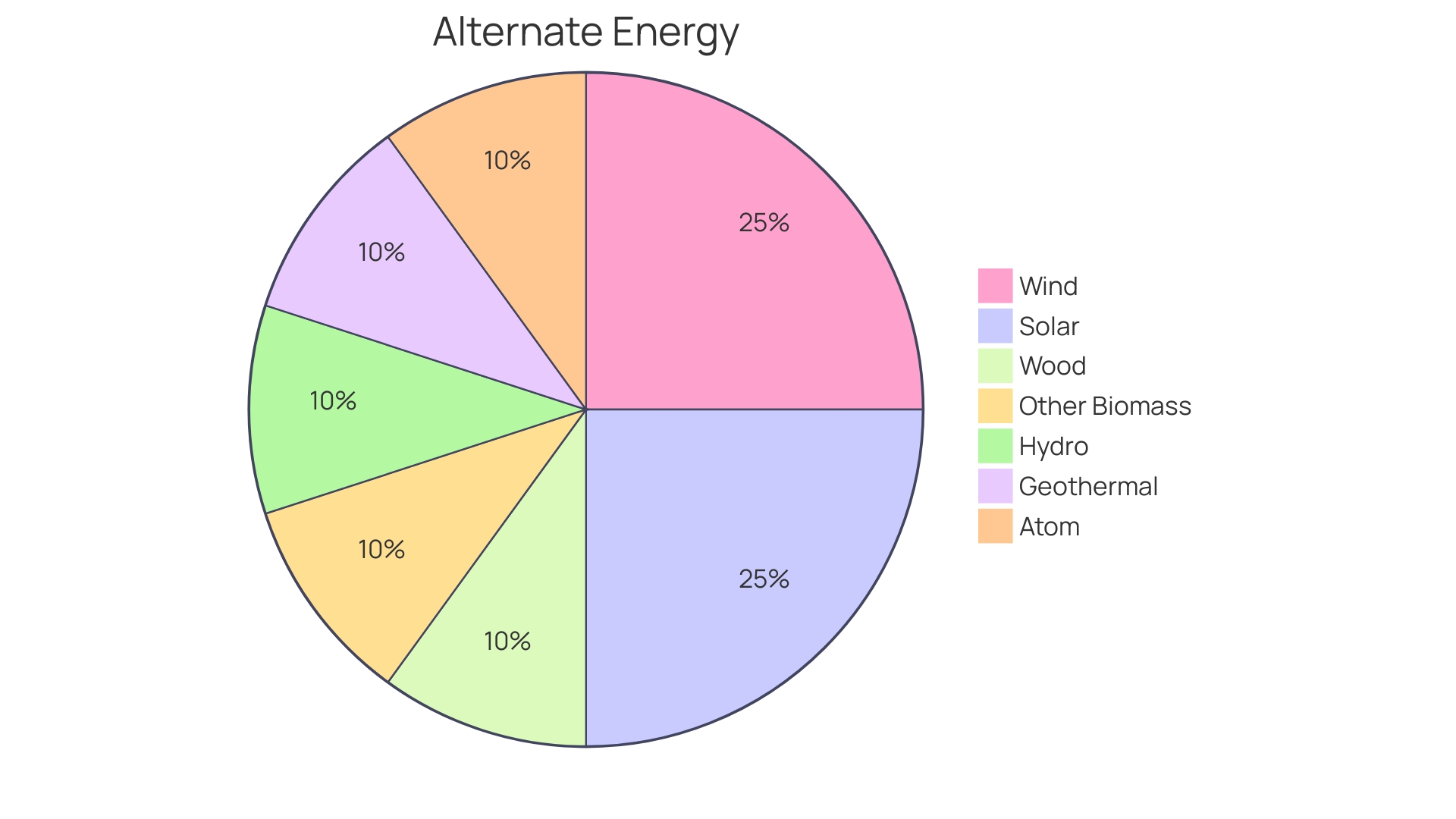
Industry Best Practices Adopted by the Air Force
The U.S. Air Force has been at the forefront of adopting innovative practices to enhance fuel efficiency in aviation. By leveraging technology such as NASA-developed algorithms, pilots can now dynamically adjust their flight paths to mitigate the effects of turbulence and unfavorable weather conditions. This not only enhances passenger comfort but also optimizes fuel consumption.
The integration of winglets, a NASA innovation, has further revolutionized aircraft design by reducing turbulence at the wingtips, thereby achieving notable fuel savings and reducing greenhouse gas emissions.
Students, especially those with field experience, have been instrumental in these advancements, providing valuable insights into the operation of UAVs and contributing to the overall success of fuel efficiency projects. Their involvement exemplifies the symbiotic relationship between practical experience and academic learning within the military's educational institutions.
In parallel to these advancements, the Air Force is also exploring the potential of micro-reactor technology to provide safe, reliable, and clean energy. Senior officials laud the collaborative efforts to demonstrate this capability, emphasizing the importance of partnership with regulatory authorities, state and local communities, and Tribal Nations. This initiative is part of a broader strategy to secure energy infrastructure and ensure mission resilience against environmental changes.
Furthermore, the Air Force's collaboration with Air Company on Project SynCe seeks to produce synthetic jet fuel from atmospheric CO2 and water. This innovative approach could drastically reduce greenhouse gas emissions by up to 97%, marking a transformative step toward sustainable aviation fuel (SAF). Such private-public investments underscore the aviation industry's commitment to adopting SAF and ensuring its compatibility with existing jet engines, signaling a significant shift from the jet fuel standards established in the 1950s.
Lastly, the adoption of clean energy solutions, such as solar and wind power, is gaining momentum. This shift in energy sources is not only essential for environmental sustainability but also reflects the diverse ways in which industries are responding to the global call for reduced carbon emissions.
These multifaceted efforts by the Air Force to enhance fuel efficiency are a testament to the industry's dedication to innovation, sustainability, and collaboration. From advanced flight path algorithms to micro-reactors and synthetic fuels, the pursuit of these practices embodies a proactive approach to addressing the challenges of aviation fuel in the 21st century.
Fuel Efficiency Initiatives and Metrics
For the United States Air Force, fuel efficiency is paramount. It's a critical factor in both operational readiness and cost management. To this end, the Air Force employs a set of sophisticated metrics to gauge the effectiveness of their fuel use.
These include analyzing fuel consumption per flight hour, closely monitoring aircraft performance metrics, and meticulously tracking carbon emissions.
One of the challenges facing the Air Force is the need for a continuous upgrade and modernization of technology without overhauling the entire software infrastructure. This approach has been critical in ensuring ongoing progress and maintaining operational efficiency.
In an era of heightened readiness concerns, the Air Force has been called to reassess its preparedness for potential conflict with peer competitors. This includes a shift from subjective, squadron-wide readiness reporting towards a more granular, outcome-based readiness assessment. The call for an individual performance-based readiness evaluation aligns with the broader Department of Defense initiative to modernize military capabilities, such as the F-35's Block 4 upgrades, despite facing budget and schedule challenges.
The Air Force's initiatives in fuel efficiency and readiness are further complemented by pioneering advancements in energy. Micro-reactor technology and electric passenger aircraft are just two examples of how the Air Force is at the forefront of adopting clean and innovative energy solutions to enhance mission resilience and operational capability.
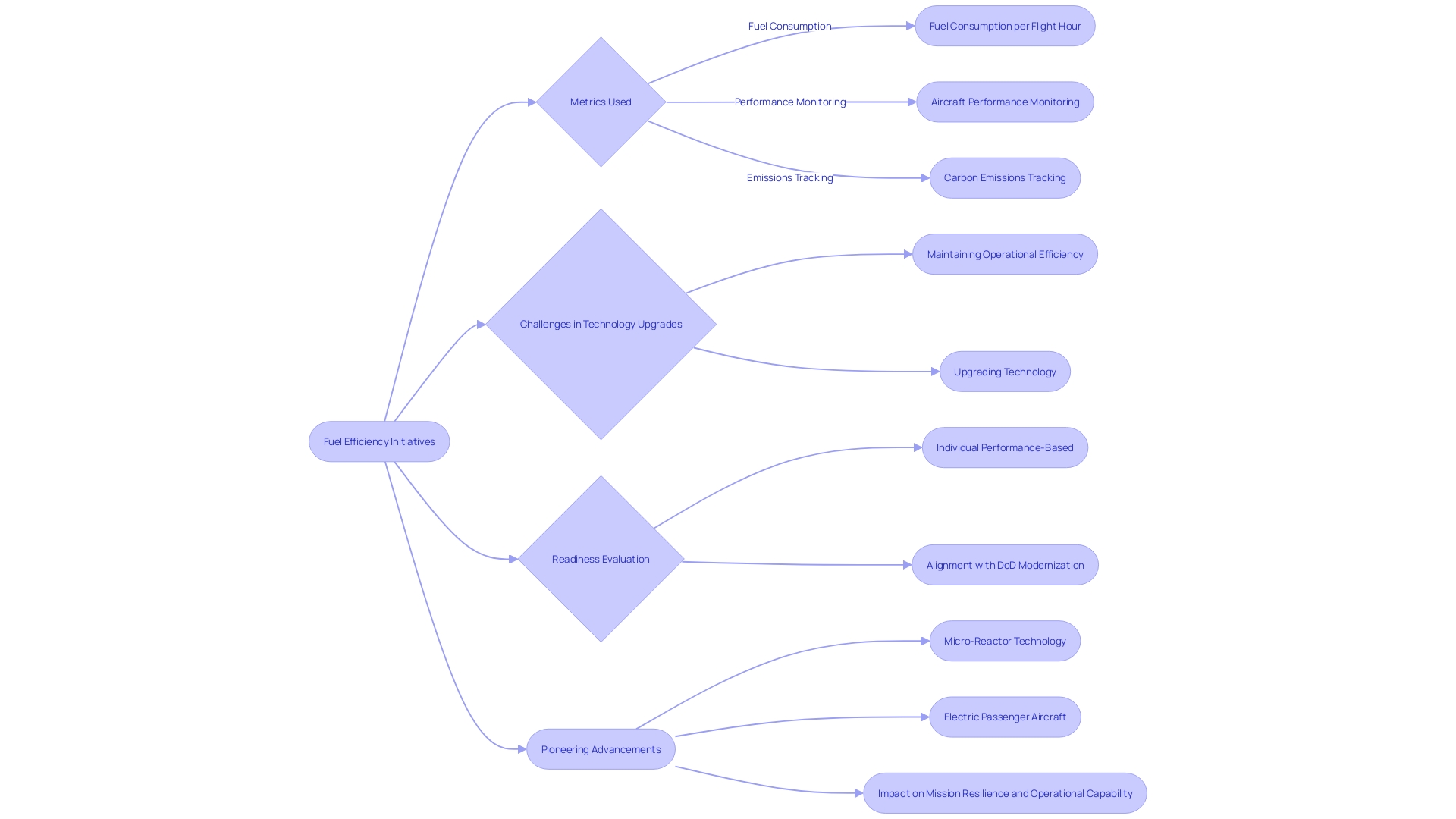
Role of the Aviation Fuel Efficiency Office (FEO)
The Aviation Fuel Efficiency Office (FEO) is at the forefront of the Air Force's commitment to optimizing fuel efficiency. Charged with the mission to enhance fuel efficiency, the FEO collaborates with various departments to integrate cutting-edge technologies and strategies. For instance, the FEO's emphasis on micro-reactor technology demonstrates a proactive approach to secure energy infrastructure amidst changing environmental conditions.
Dr. Ravi Chaudhary, assistant secretary of the Air Force for Energy, Installations, and Environment, champions this innovation, stating, "...we are laying the foundation for American competitiveness in energy for years to come." The FEO's initiatives are not just about reducing fuel consumption; they are aligned with the broader goal of mission resilience and resource availability, as highlighted by deputy assistant secretary Nancy Balkus.
Moreover, the FEO's work is in tandem with the Air Force's broader strategy to become a climate-informed workforce. This aligns with efforts to ensure that day-to-day operations consider the Climate Action Plan, increasing the combat capability and survivability of installations through energy efficiency. A testament to this strategic focus on energy is the collaboration between the Air Force and Air Company on the Sync project, which aims to produce synthetic jet fuel that could drastically cut greenhouse gas emissions.
Furthermore, the FEO's role is supported by significant federal investments, such as the FAA's commitment of over $100 million to implement airplane technologies to reduce fuel, emissions, and noise. This is complemented by more than $130 million in university research and the deployment of software enabling more efficient taxi operations. These investments reflect the assistant secretary’s priorities to revolutionize Air Force energy use and increase the agility of the joint force.
The transformative efforts by the FEO underscore the importance of energy as a key factor in national security. As Dr. Chaudhary explains, "Energy efficiency ruggedizes our installations... and offers redundant energy systems that increase survivability." The FEO's responsibility extends beyond mere collaboration; it is about pioneering a sustainable future that supports the Air Force’s operational superiority in an era of great power competition.
Policy and Planning for Fuel Efficiency
In their quest for fuel efficiency, the United States Air Force (USAF) has adopted innovative policies and planning strategies that exemplify a commitment to sustainability and operational excellence. A key initiative is the implementation of a dynamic Request for Proposals (RFP) process that leverages a flexible scope of work. This approach incentivizes creative proposals that enhance building performance and contribute to achieving energy goals.
Validation of these performance metrics is now a foundational component of project scopes, acknowledging that continuous monitoring and post-occupancy evaluations are critical to realizing net-zero energy buildings. Such dedication to energy efficiency is echoed in the educational sphere, where institutions like Waubonsee Community College collaborate with organizations like Argonne National Laboratory to immerse students in the analysis of Sustainable Aviation Fuels (SAFs) using the Greenhouse Gases, Regulated Emissions, and Energy Use in Technologies (GREET) model. These educational initiatives not only deepen the understanding of SAFs' life-cycle impact but also inspire a diverse cohort of students to draw connections between energy, environment, and technology.
The Air Force's commitment to a climate-informed workforce is further demonstrated by its historic advancement in micro-reactor technology. As articulated by Dr. Ravi Chaudhary, energy innovations such as micro-reactors are poised to become integral to Air Force installations, delivering safe, reliable, and clean energy critical to national security. This transformative technology, characterized by self-adjusting safety features and an ability to operate independently from commercial grids, showcases the Air Force's proactive approach to securing energy infrastructures against changing environmental conditions.
The pursuit of energy efficiency transcends into the operational realm as well, where the USAF's investment in technology modernization is imperative. The FAA's commitment to reducing aviation's environmental footprint is evident in its allocation of over $100 million towards developing airplane technologies that minimize fuel, emissions, and noise. Furthermore, the deployment of advanced software to streamline taxi times aligns with the Air Force's broader strategy to enhance energy resilience and optimize combat capability.
During Energy Action Month, the Department of the Air Force highlights the indispensable role of energy in strategic competition, particularly within the Indo-Pacific Region. The emphasis on 'Powering Possibility' aims to revolutionize the Department's energy use by investing in pioneering technologies and processes that solidify the USAF's competitive edge. Dr. Chaudhary's remarks underscore energy as the determinant of victory, revealing an unwavering focus on innovation and optimization in the energy domain.
Collectively, these efforts manifest the Air Force's resolute approach to integrating energy efficiency into its core operational and strategic frameworks.

Execution and Maintenance of Fuel-Saving Measures
The U.S. Air Force's pursuit of energy efficiency is not just a matter of policy but a strategic imperative. In the theater of modern aerial combat, where great power competition looms large, the margin of victory may hinge on the effective execution and maintenance of fuel-saving measures. The Air Force's commitment to this cause is echoed in the words of Dr. Ravi Chaudhary, assistant secretary for Energy, Installations, and Environment, who emphasizes the role of energy as a cornerstone of combat capability and survivability.
Rigorous no-notice inspections and operational readiness assessments underline the Air Force's dedication to ensure that its fleet, including the venerable KC-135 tankers, is prepared to project power globally at a moment's notice.
As the Air Force grapples with the challenges posed by climate-related disruptions to power grids and military readiness, it has turned to innovative solutions to secure its energy infrastructure. A historic collaboration with Oklo Inc. aims to bring micro-reactor technology to Air Force installations, paving the way for safe, reliable, and clean energy that aligns with the Department of Defense's goals of power reliability and resilience.
Furthermore, the Air Force is reoptimizing its forces and investing in transformative technologies to enhance joint force agility. This includes the potential integration of advanced nuclear technology as a power source for critical national security infrastructures. With a benefit-to-cost ratio of 3.7-to-1 for fuel reduction strategies, the economic and strategic advantages of such initiatives are clear.
These efforts exemplify a concerted move towards a climate-informed workforce, where every decision is made with a keen awareness of its environmental impact and contribution to the overarching goal of securing a competitive edge in the realm of great power conflict.
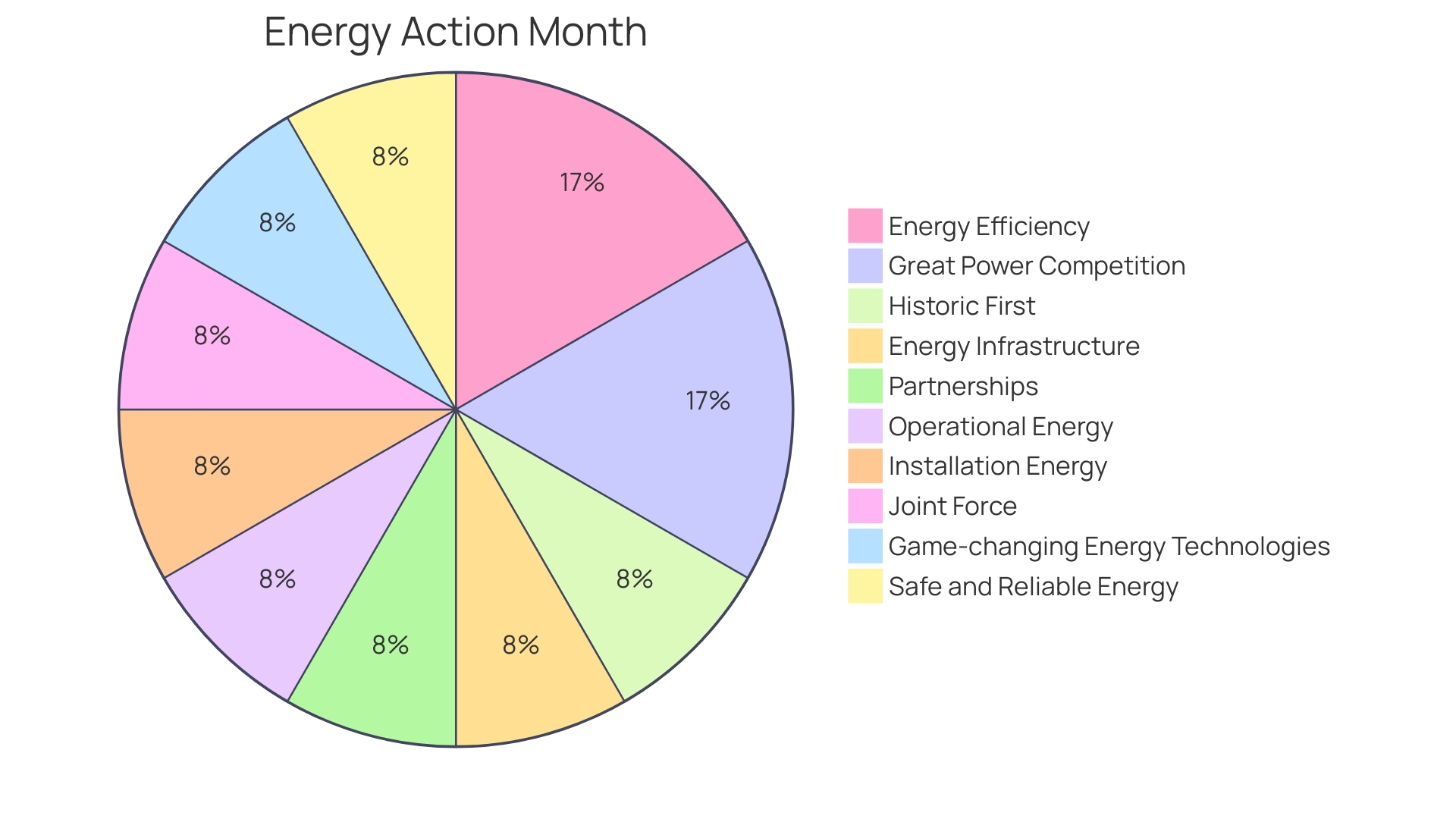
Science and Technology in Fuel Efficiency
The relentless pursuit of innovation in aviation is critical for advancing fuel efficiency and reducing environmental impact. The industry is at the cusp of a significant shift with the growing adoption of Sustainable Aviation Fuel (SAF), a renewable energy source poised to revolutionize aircraft fueling. SAF possesses the energy density required for high-performance aviation while maintaining compatibility with current jet engine technology, which has remained largely unchanged since the mid-20th century.
Recent developments showcase the industry's commitment to a greener future. For instance, Virgin Atlantic has made headlines with its strides towards net-zero carbon emissions, emphasizing the airline's dedication to maintaining a young and clean fleet. This aligns with the collaborative efforts of industry giants like Airbus and Emirates, who are proactively working towards making their aircraft fully SAF-capable by 2030, demonstrating the practical application of sustainability goals in aviation.
The momentum is undeniable as both public and private sectors rally to support SAF. Despite SAF currently accounting for a mere fraction of global aviation fuel, its potential is immense. Studies indicate that SAF could slash the carbon intensity of flying by over 80%.
However, challenges such as limited supply, fragmented demand, and higher costs persist.
Beyond CO2 emissions, the industry is also grappling with the non-CO2 effects of aviation, such as contrail cirrus formations, which have a significant warming impact. Awareness and research into these effects are gaining traction, adding another layer to the sustainability challenge in aviation.
With nearly 2.5% of global carbon emissions attributed to air travel, and contrails contributing an additional climate impact on par with 61% of annual emissions, the shift to SAF is not just innovative but imperative. The International Air Transport Association (IATA)'s resolution to achieve net-zero flight operations by 2050, representing 83% of total air traffic, marks a pivotal step toward this goal, reflecting the industry-wide urgency to mitigate aviation's environmental footprint through technological and fuel advancements.
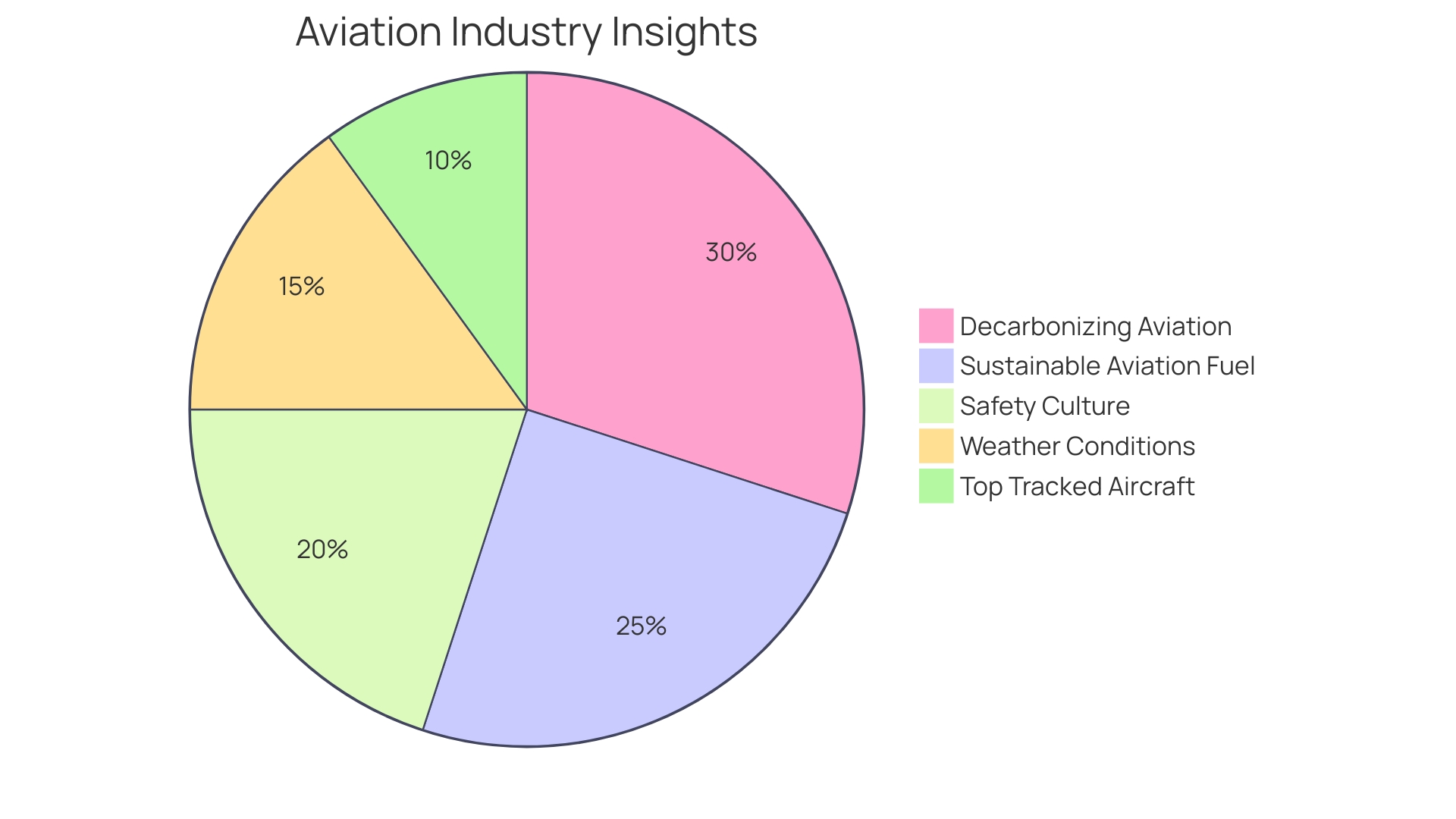
Alternative Fuels and Sustainable Aviation Fuels (SAF)
The pursuit of alternative aviation fuels is a primary focus for the Air Force, with a strong emphasis on Sustainable Aviation Fuels (SAF) to diminish dependence on conventional fossil fuels. The commitment to exploring biofuels and synthetic options underscores the potential benefits and acknowledges the hurdles these fuels present. The adoption of SAF, a renewable and energy-dense resource, is pivotal in the aviation sector, much like past modifications to gasoline and diesel.
Ensuring Saf's reliability, safety, and compatibility with current jet engines is a critical step, considering the minimal changes to fuel properties since the 1950s. The aviation industry's fleet, designed around this stable fuel form, now faces a transformative challenge.
Robert McCormick, a senior research fellow at the U.S. Department of Energy's National Renewable Energy Laboratory (NREL), equates the development of a new jet fuel to a novel concept for the industry. The shift could entail a substantial learning curve for an industry accustomed to a 70-year fuel standard. Environmental impacts amplify the need for change, with commercial aviation accounting for roughly 3.5 percent of anthropogenic alterations to Earth's energy balance.
CO2 emissions represent one-third of this effect, while non-CO2 elements like nitrogen oxides and contrails contribute to the rest. Notably, CO2 emissions from aviation have surged since the mid-1980s, risking a substantial portion of the CO2 budget to maintain global warming within 1.5°C by 2050.
The comprehensive report, focusing on regions such as Europe, the US, and the Middle East, engages aviation and energy industry stakeholders and public sector representatives. It outlines the collaboration needed and financial and policy mechanisms to foster a favorable setting for SAF expansion. The report emphasizes the importance of identifying prime global production hubs to meet escalating demand and highlights the technology pivotal for scaling up SAF production.
It also addresses the limitations and current barriers restricting cost and supply.
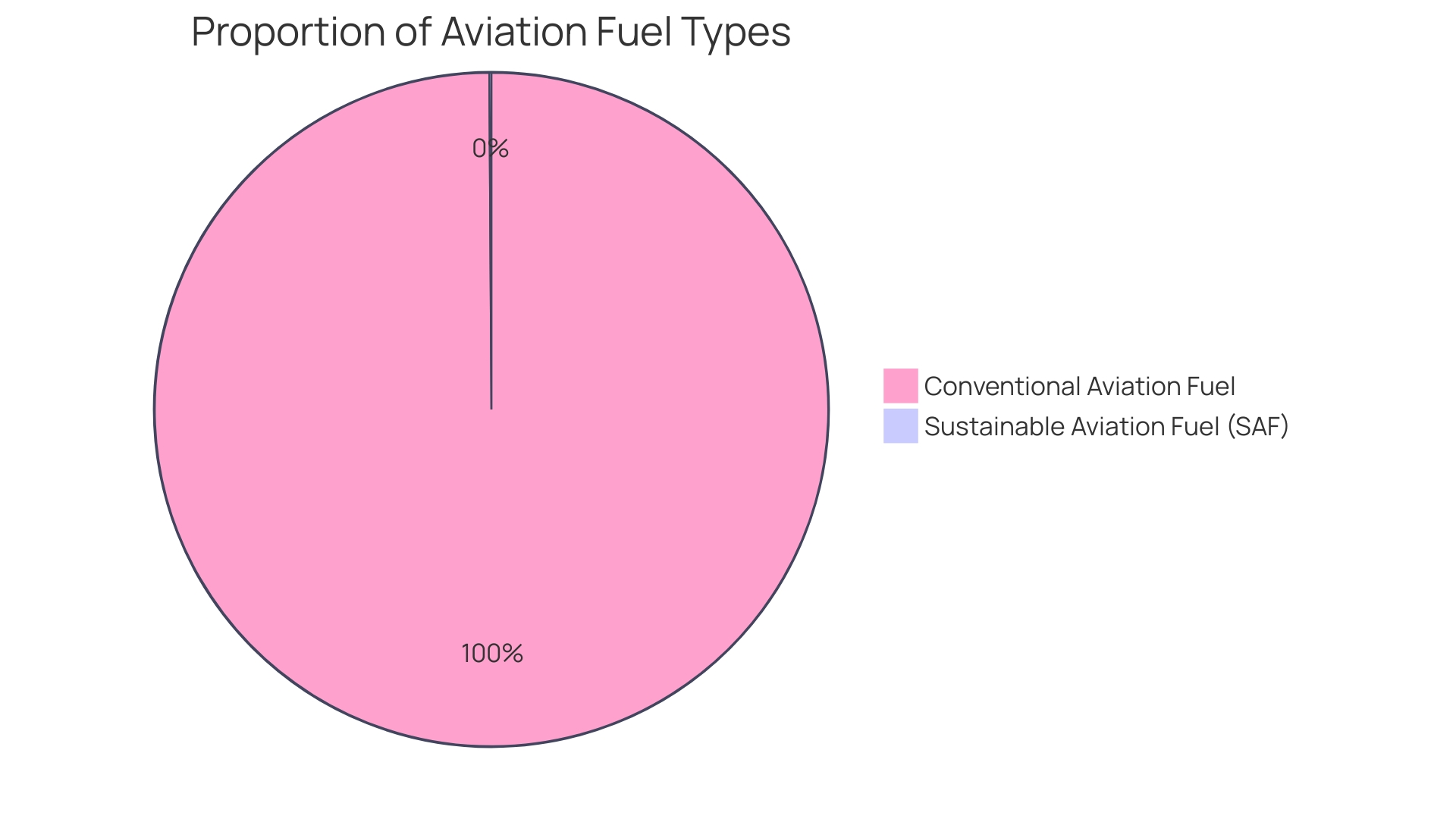
Case Study: Successful Fuel-Saving Programs in the Air Force
The Air Force is pioneering a significant shift towards energy independence and resilience with the adoption of cutting-edge micro-reactor technology. Assistant Secretary of the Air Force for Energy, Installations, and Environment, Dr. Ravi Chaudhary, has emphasized the collaborative effort to integrate safe, reliable, and clean energy into installations, a movement that's not only innovative but also critical for national security. With changing environmental conditions posing new threats, securing energy infrastructure and supply chains is paramount for mission resilience.
Partnerships with entities like Oklo Inc., the Nuclear Regulatory Commission, Department of Energy, Alaska stakeholders, and Tribal Nations underscore the collective commitment to a successful pilot and scalable future implementation.
In the face of great power competition and as part of Energy Action Month, the Air Force recognizes that energy is a strategic asset that can be the margin of victory in conflicts. Dr. Chaudhary highlights the importance of energy efficiency in enhancing combat capability and survivability, by providing redundant energy systems and extending range and endurance. The investment in technologies that revolutionize energy use within the Department of the Air Force is a top priority, aiming to increase the agility of the joint force.
However, the Air Force also faces the challenge of climate change, with natural disasters threatening the integrity of power grids and military base operations. The objective is to develop a climate-informed workforce that makes operational decisions aligned with the Climate Action Plan, thus ensuring preparedness and defense capabilities in the face of unpredictable events.
In addition to the strategic pivot to micro-reactors, the Air Force is exploring on-site fuel generation as a solution to logistical challenges in fuel supply. Project Fierce's proof of concept with Air Company’s eFuel demonstrates a commitment to innovation, having successfully passed a demonstration test. This approach to energy provisioning not only addresses the limitations of fuel storage capacity but also aligns with the broader goals of energy security and sustainability.
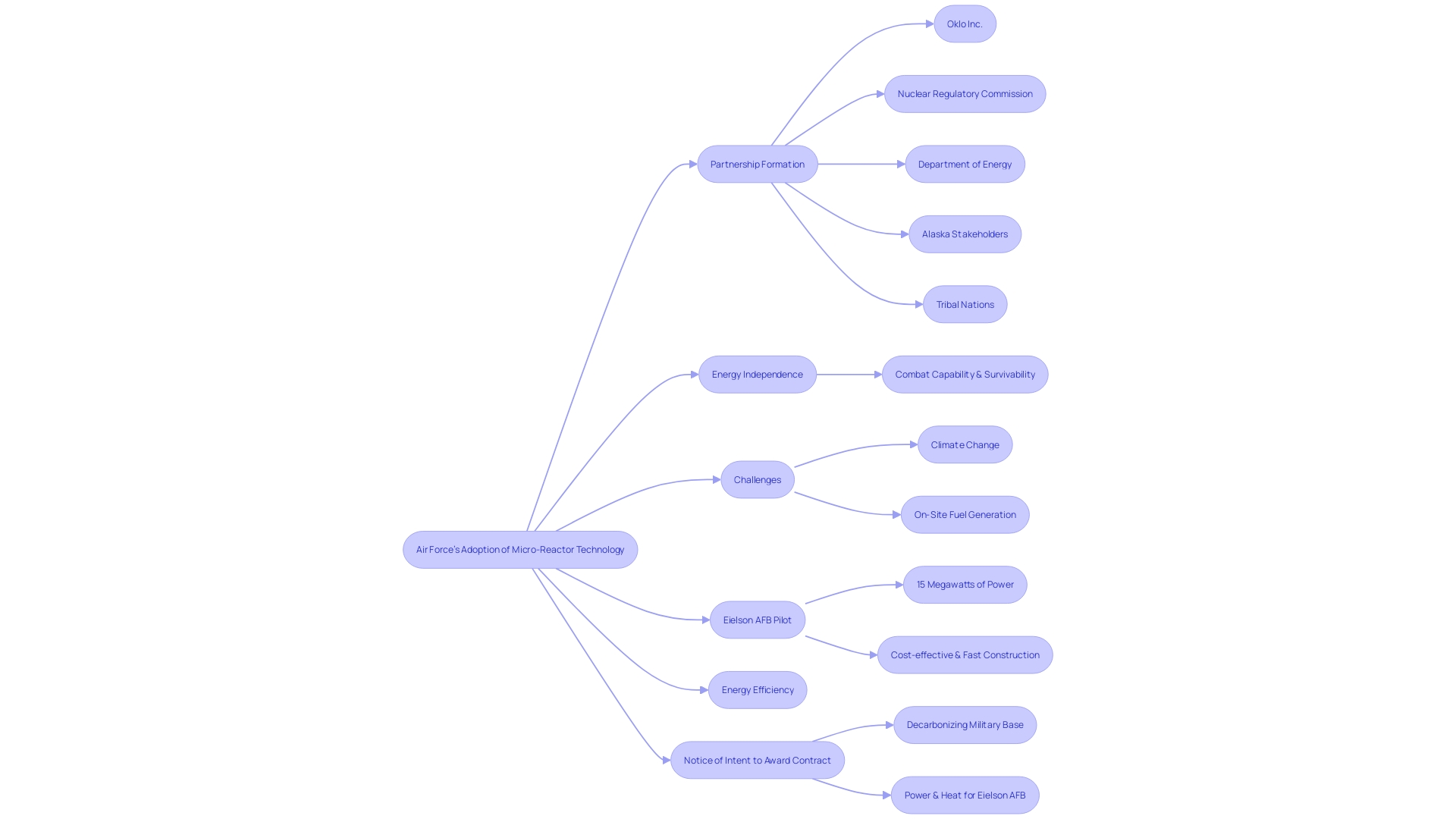
Lessons Learned and Future Directions
The Air Force's commitment to energy efficiency has been a cornerstone in enhancing its combat capability and survivability. Dr. Ravi Chaudhary, the assistant secretary of the Air Force for Energy, Installations, and Environment, articulates the significance of energy as the margin of victory in conflicts, emphasizing innovation and re-optimization for maintaining a competitive edge. The Air Force's forward-thinking approach is evident in its prioritization of operational and installation energy capabilities that bolster joint force agility and the exploration of revolutionary energy technologies.
In the context of education and awareness, collaborative efforts between Argonne National Laboratory and Waubonsee Community College have yielded a robust case study on Sustainable Aviation Fuels (Safe), utilizing the GREET model. This initiative, led by biology professor Danielle Fischer, demonstrates the cross-disciplinary interest in Safe, highlighting the intersection of software, energy, and environmental impact. Fischer's experience underscores the importance of real-world economic and environmental connections in educational material, which resonates with students from diverse academic backgrounds.
Significantly, the LanzaJet Freedom Pines Fuels plant in Soperton, Georgia, stands as a testament to the advances in sustainable aviation fuel technology. As the world's first ethanol-to-SAF production plant, LanzaJet's breakthrough heralds a new chapter in decarbonizing aviation, leveraging sustainable feedstock and waste-based solutions.
Under Secretary Melissa Dalton's remarks at the Brookings Institution reinforce the urgency and proactive measures taken by the Air Force and Space Force in confronting global challenges. Dalton's perspective is echoed by the Air Force's examination of the F-35's sustainment elements, as recommended by the GAO, to optimize maintenance planning and management, supply support, and information technology systems continuous support.
The Air Force Academy's Metal Flying Things Research Center study, which found a significant portion of the Air Force unfit for service in the real world, has catalyzed the IAMSOFT program to equip airmen with essential civilian skills. This initiative is part of a broader endeavor to generate readiness and develop capabilities that address the dynamic nature of modern threats.
Sustainable aviation fuel continues to be a pivotal focus for emissions reduction in aviation. Reports from Carbon Direct, in partnership with Apple, provide comprehensive insights into the varied fuel types, carbon intensities, sustainability criteria, and costs associated with SAF production pathways. The Air Force's embrace of SAF and its potential impacts is an integral aspect of its strategy to project power and develop capabilities in an environmentally responsible manner.
Overall, the Air Force's fuel efficiency initiatives, coupled with educational partnerships and groundbreaking SAF production technologies, delineate a future of increased energy independence, environmental stewardship, and strengthened defense capabilities.
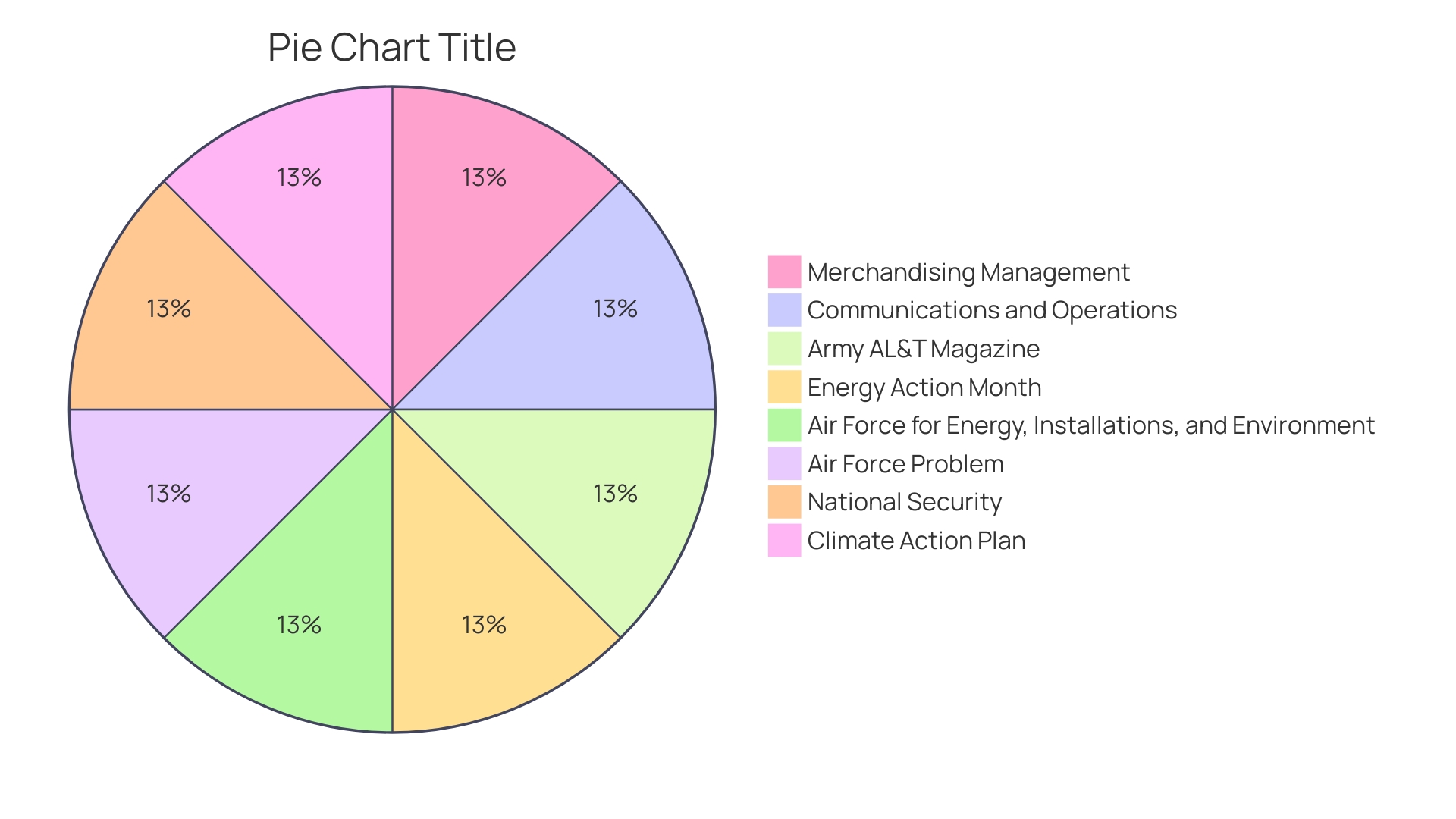
Conclusion
The United States Air Force (USAF) is at the forefront of addressing modern military demands and the need for climate-conscious operations. With a comprehensive Climate Action Plan guiding decisions, the Air Force is transitioning towards a climate-informed workforce and pursuing sustainable aviation fuel (SAF) and on-site fuel generation.
The Air Force's commitment to sustainability is reflected in increasing investments in SAF production and use. Regional initiatives, like those in the Great Lakes and Rocky Mountain regions, provide valuable insights into the potential of SAF in shaping a greener aviation future.
To address rising fuel costs and environmental concerns, the Air Force is embracing innovative energy strategies. The adoption of micro-reactor technology and the exploration of on-site fuel generation demonstrate a proactive approach to ensure energy resilience and national energy competitiveness.
Efforts to enhance fuel efficiency in aviation include the integration of advanced technologies, such as NASA-developed algorithms and winglets, which optimize flight paths and reduce turbulence. Collaborations with external stakeholders, including students with field experience, contribute to the success of fuel efficiency projects.
The Aviation Fuel Efficiency Office (FEO) plays a crucial role in optimizing fuel efficiency within the Air Force. Collaborations with various departments, federal investments, and stakeholder alignment support the FEO's initiatives and underscore the importance of energy as a key factor in national security.
The Air Force employs sophisticated metrics to gauge the effectiveness of fuel use and is shifting towards outcome-based readiness assessments. Advancements in energy, such as micro-reactor technology and electric passenger aircraft, enhance mission resilience and operational capability.
The pursuit of sustainable aviation fuel is pivotal in reducing the environmental impact of aviation. The industry's commitment to SAF and the adoption of net-zero carbon emissions goals reflect the urgency and importance of sustainable fuel solutions.
In conclusion, the USAF's commitment to fuel efficiency, sustainability, and innovation is evident in its pursuit of sustainable aviation fuel, adoption of advanced technologies, collaboration with industry partners, and dedication to a climate-informed workforce. The Air Force's proactive approach serves as a model for the aviation industry in adapting to a sustainable and resilient future.




